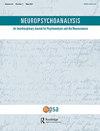Unraveling the roots of depression – it’s complicated
Q3 Psychology
引用次数: 0
Abstract
ABSTRACTThe present work comments on Watt’s Target Article, which argues that focusing on separation distress, a relevant construct from Pankseppian affective neuroscience theory, might help to shed new light on depression. This represents an important new research avenue, because Watt’s recent work shows the difficulties in understanding depression, a devastating state of mind with millions around the globe being afflicted. Several key points of Watt’s work are summarized and reflected on.KEYWORDS: DepressionPankseppaffective neuroscienceseparation distresspanic Disclosure statementNo potential conflict of interest was reported by the author(s).Notes1 Please note that Jaak Panksepp coined the brain system being activated by separation distress in his early career as PANIC system, and later changed to the SADNESS or PANIC/GRIEF nomenclature.2 Please note that in studies investigating primary emotional systems as traits, depressed patients still were characterized by tremendously higher SADNESS than healthy controls (Montag et al., Citation2022) and state shifts of the SEEKING/SADNESS system might develop very differently when comparing depressed patients and their course of depression. Insofar, we believe low SEEKING / high SADNESS constellations to be highly relevant to understand depression, at least in the earlier manifestations of depression.3 Please note that also other associations such as with lower PLAY, higher FEAR and depressive tendencies could be observed in this work.4 https://psycnet.apa.org/search/basic (stats from 10th August 2023).揭开抑郁症的根源——这很复杂
摘要本文对Watt的Target Article进行了评论,该文章认为关注Pankseppian情感神经科学理论中的分离痛苦(separation distress)可能有助于对抑郁症有新的认识。这代表了一个重要的新研究途径,因为瓦特最近的工作显示了理解抑郁症的困难,抑郁症是一种毁灭性的精神状态,全球有数百万人受到折磨。总结和反思了瓦特作品中的几个关键点。关键词:抑郁、抑郁、情感神经科学、分离、痛苦、披露声明作者未报告潜在的利益冲突。注1请注意,Jaak Panksepp在他的早期职业生涯中创造了由分离痛苦激活的大脑系统,称为PANIC系统,后来改为悲伤或恐慌/悲伤命名请注意,在将主要情绪系统作为特征进行调查的研究中,抑郁症患者的sad特征仍然比健康对照组高得多(Montag et al., Citation2022),并且在比较抑郁症患者及其抑郁过程时,seek / sad系统的状态转移可能发展得非常不同。到目前为止,我们认为低寻求/高悲伤星座与理解抑郁症高度相关,至少在抑郁症的早期表现中是如此请注意,在这项工作中也可以观察到其他关联,例如较低的PLAY,较高的恐惧和抑郁倾向。4 https://psycnet.apa.org/search/basic(从2023年8月10日开始统计)。
本文章由计算机程序翻译,如有差异,请以英文原文为准。
求助全文
约1分钟内获得全文
求助全文
来源期刊

Neuropsychoanalysis
Psychology-Neuropsychology and Physiological Psychology
CiteScore
2.50
自引率
0.00%
发文量
24
 求助内容:
求助内容: 应助结果提醒方式:
应助结果提醒方式:


